 |
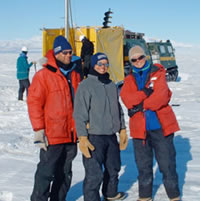 |
Drilling Below Antarctica to Learn About Climates of the Past
Science educators on a research immersion experience with the Antarctic Geological Drilling Project (ANDRILL) will be sending in postcards while they are in Antarctica from October 2007 until January 2008. The project team is drilling into sedimentary rocks below the ice of the Ross ice shelf to help us learn more about the environmental changes that have affected the continent in the past.
ANDRILL educators Louise Huffman, Kate Pound, Bob Williams, Ken Mankoff, Robin Frisch-Gleason, Joanna Hubbard, and Julia Dooley will be be writing "Postcards from the Field". Click on their names to find out more about them!
|
Postcards
 What is under the Ice? How do we know? from Kate Pound, December 10, 2007 What is under the Ice? How do we know? from Kate Pound, December 10, 2007
 Microfossils in the ANDRILL core from Robert Williams, November 28, 2007 Microfossils in the ANDRILL core from Robert Williams, November 28, 2007
 Exploring Subsurface Geology from Robin Frisch-Gleason, November 25, 2007 Exploring Subsurface Geology from Robin Frisch-Gleason, November 25, 2007
 Life in an Antarctic Field Camp from Julia Dooley, November 2, 2007 Life in an Antarctic Field Camp from Julia Dooley, November 2, 2007
 What is ANDRILL? from Robin Frisch-Gleason, November 1, 2007 What is ANDRILL? from Robin Frisch-Gleason, November 1, 2007
 A Visit to Scott's Discovery Hut, Antarctica from Robin Frisch-Gleason on October 28, 2007 A Visit to Scott's Discovery Hut, Antarctica from Robin Frisch-Gleason on October 28, 2007
 What if there were no Antarctica? from Ken Mankoff on October 28, 2007 What if there were no Antarctica? from Ken Mankoff on October 28, 2007
 Skua Boots from Joanna Hubbard on October 14, 2007 Skua Boots from Joanna Hubbard on October 14, 2007
 Mt. Erebus from Observation Hill, Ross Island, Antarctica from Kate Pound on October 14, 2007 Mt. Erebus from Observation Hill, Ross Island, Antarctica from Kate Pound on October 14, 2007
 Leaving on a jet plane! from Joanna Hubbard on October 9, 2007 Leaving on a jet plane! from Joanna Hubbard on October 9, 2007
 Picking up our Extreme Cold Weather (ECW) gear at the Clothing Distribution Center (CDC) from Joanna Hubbard on October 8, 2007 Picking up our Extreme Cold Weather (ECW) gear at the Clothing Distribution Center (CDC) from Joanna Hubbard on October 8, 2007
 ARISE Team Enjoys Spring Colors and Fragrances in NZ from Louise Huffman on October 7, 2007 ARISE Team Enjoys Spring Colors and Fragrances in NZ from Louise Huffman on October 7, 2007
 En Route to Antarctica - First Stop New Zealand from Kate Pound on October 4, 2007 En Route to Antarctica - First Stop New Zealand from Kate Pound on October 4, 2007
|
 ANDRILL Learn more about the research!
ANDRILL Learn more about the research!
 Postcards from the Poles
Postcards from the Poles
You might also be interested in:

Antarctica is unique. It is the coldest, windiest, and driest continent on Earth. The land is barren and mostly covered with a thick sheet of ice. Antarctica is almost entirely south of the Antarctic Circle
...more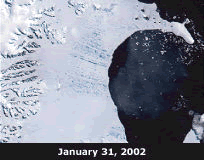
Ice shelves are a part of the Earth's cryosphere. Ice shelves are usually extensions of glaciers or ice sheets that cover the land. An ice shelf is a part of an ice sheet that extends from land out over
...more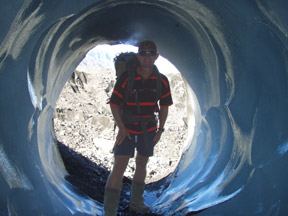
I'm a New Zealand teacher. I teach geography to high school students before some of them go on to university. We try to teach as much geology and earth science as we can, and we go on lots of field trips.
...more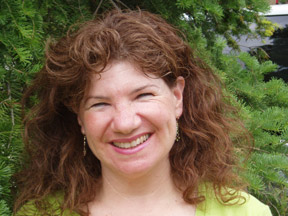
Robin Frisch-Gleason brings a background in both geology and teaching to the ANDRILL Project. Robin's first career was geology. She received her B.A. in Geology from Oberlin College in 1982, and her M.S.
...more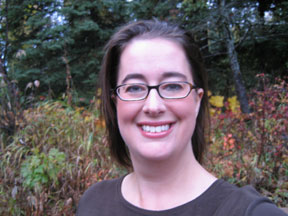
This is my 10th year with the Anchorage School District as a science teacher, currently working with K-12 teachers around the district rather than in a classroom. My most recent classroom time was as a
...more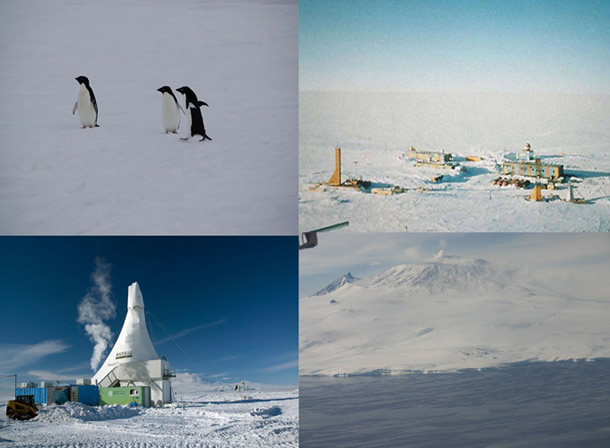
How Do We Know What's Underneath the Ice in Antarctica? After I sent my last postcard, someone asked me "How do you know what is underneath the ice in Antarctica?" I got the question just before I had
...more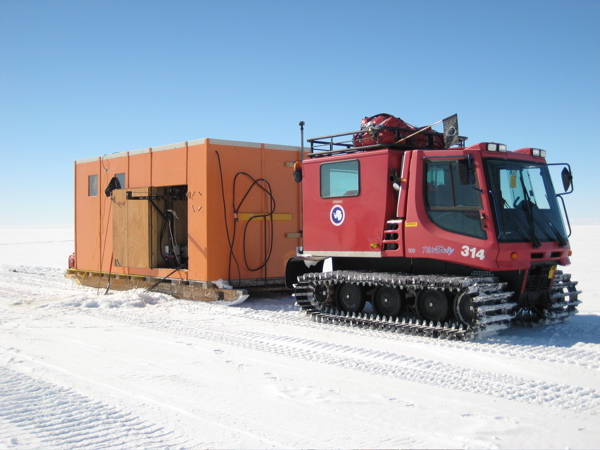
Imagine being in a remote field camp in Antarctica, set up on sea ice just two meters thick. What could scientists possibly be doing there? Well, a group of researchers just returned from such a project:
...more
 ANDRILL Learn more about the research!
ANDRILL Learn more about the research! ANDRILL Learn more about the research!
ANDRILL Learn more about the research!








